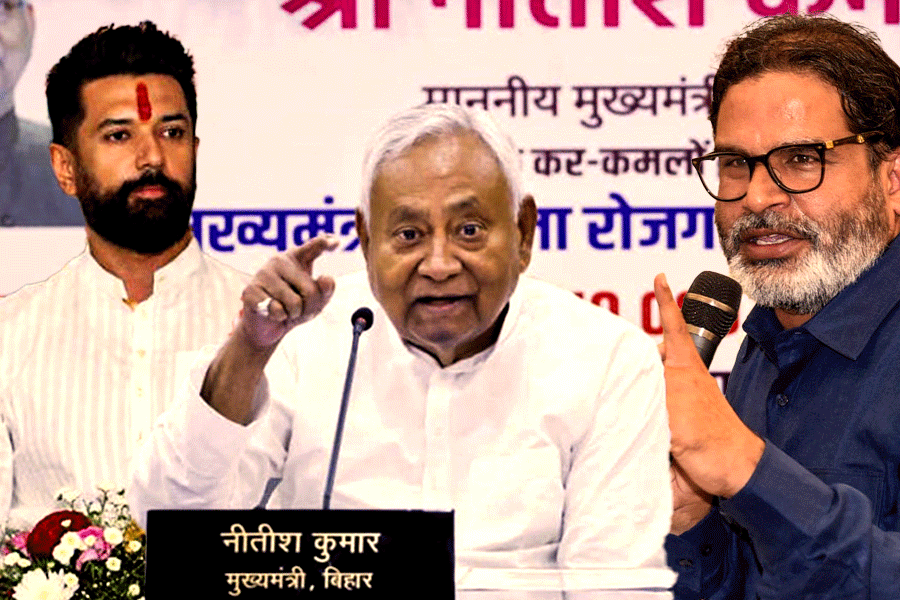 |
| Umrao Singh with Amrita Sher-Gil behind and Indira in foreground. Marie Antoinette is reflected in the mirror |
There comes a moment in the life of every human being when the forward march of time seems to come to a stop. The present collapses into the past like a concertina and the moment seems to exist outside time.
That is the feeling one has, moving from one digital photomontage to the other, as one watches the video installation at Vivan Sundaram’s exhibition entitled Re-take of ‘Amrita’ 2001-2002, now on at the Seagull Arts and Media Resource Centre.
Over the past 35 years Sundaram has been in charge of the Sher-Gil archive, comprising photo albums of the distaff side of his family with some remarkable black-and-white photographs taken mainly by his maternal grandfather Umrao Singh Sher-Gil (1870-1954). Obsessed with the camera, Umrao Singh had taken many intimate photographs of his Hungarian wife Marie Antoinette (1881-1948), daughters Amrita (1913-1941) and Indira (1914-1975), who is Sundaram’s mother, and of himself, fully clothed and in loin cloth. Amrita, temperamental, voluptuous and also a voluptuary, had inherited this narcissistic streak.
Sundaram uses these photographs as the raw material of his photomontages and his video installation Indira’s Piano with two TV monitors and a piano, a reminder of the music that bound together these two women with very different personalities — Indira, quiet and withdrawn, and the flamboyant Marie, an amateur opera singer. The two videos of 15 minutes’ duration each are entitled Second Daughter: Indu and MA: Marie Antoinette.
Sundaram enters the space of the photographs (literally in one work where he is an infant posing with his family), digitally altering the relationships of the protagonists, juxtaposing figures with figures and figures with Amrita’s paintings, thereby creating complex concatenations that existed in real life. The strong undercurrent of sexuality in these relationships comes to the surface.
Umrao Singh, with his bare body and flowing beard and mane, becomes a figure akin to Jokanaan before his Salome-like wife. What used to be the photograph of the living room in their Paris flat becomes peopled with the figures of an aged and ascetic Umrao Singh and a fashionably-attired Amrita. One can’t help thinking of Lucian Freud’s nude paintings of his own daughters in this context. But where Freud could have been painting cadavers, through Umrao Singh’s lens Amrita looks very sexually alive. Luckily for her, she did not live long enough for decay to set in.
The slender Indira stands behind a painting of herself. Amrita poses in a swimsuit next to a Gauginesque nude, her own creation. The artist lies bear-breasted on the beach for her first cousin-husband. In his old age, Umrao Singh “shoots” himself, as his wife, a suicide, materialises behind him.
In the videos as well as the photomontages, all these characters are phantoms alive in an enchanted space where image, reality and reflection are constantly shifting planes seguing into each other. Quite literally so in certain sections of the videos. Music plays an important role in the videos. We hear snatches of popular opera, Piaf, Chopin and Debussy. It heightens the dream-like effect that the exhibition induces in the viewer.
One question could still intrigue the viewer. Why did Amrita Sher-Gil hark back to post-impressionism although she was in the thick of the modernist movement? Why did her contemporaries not appeal to her?










